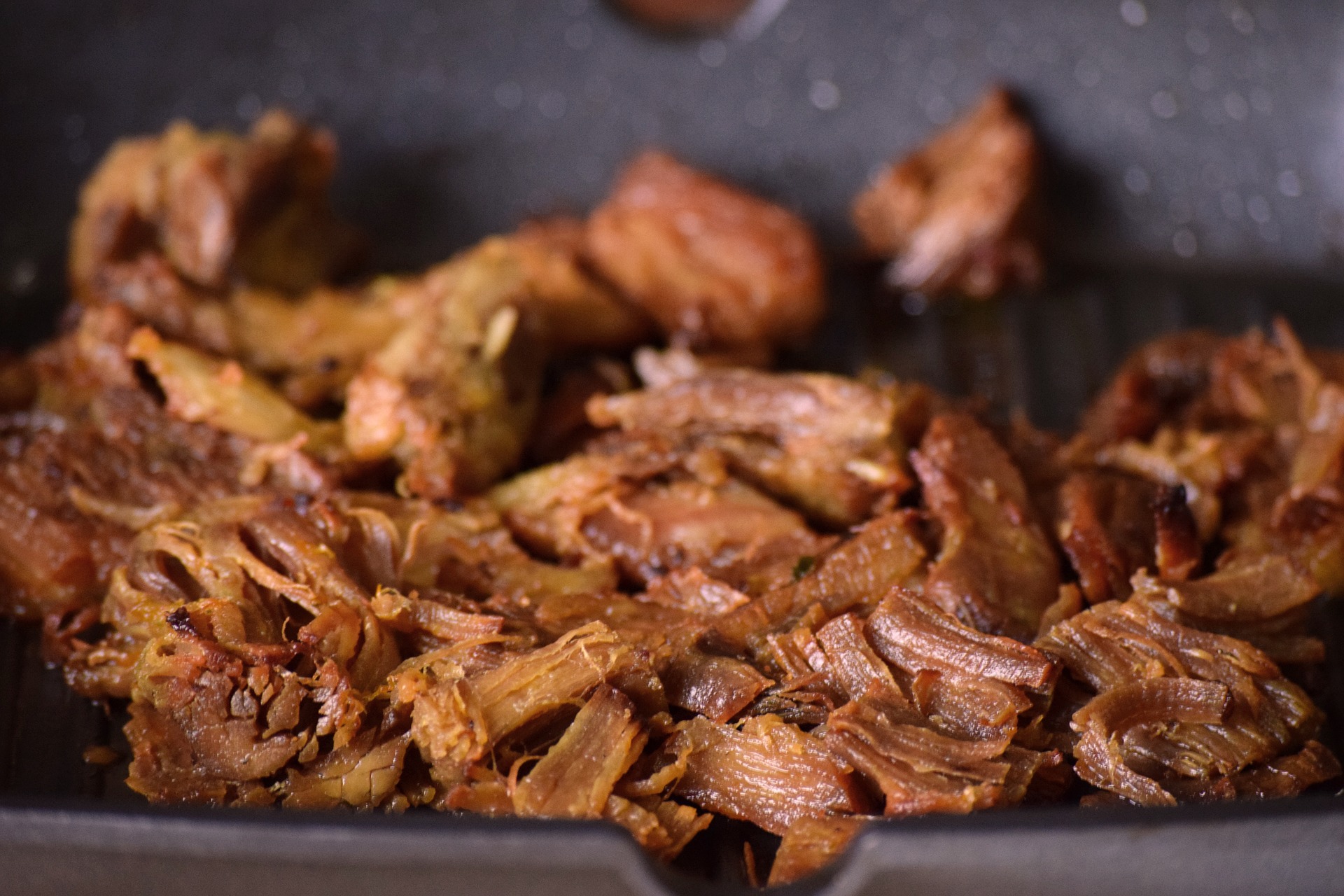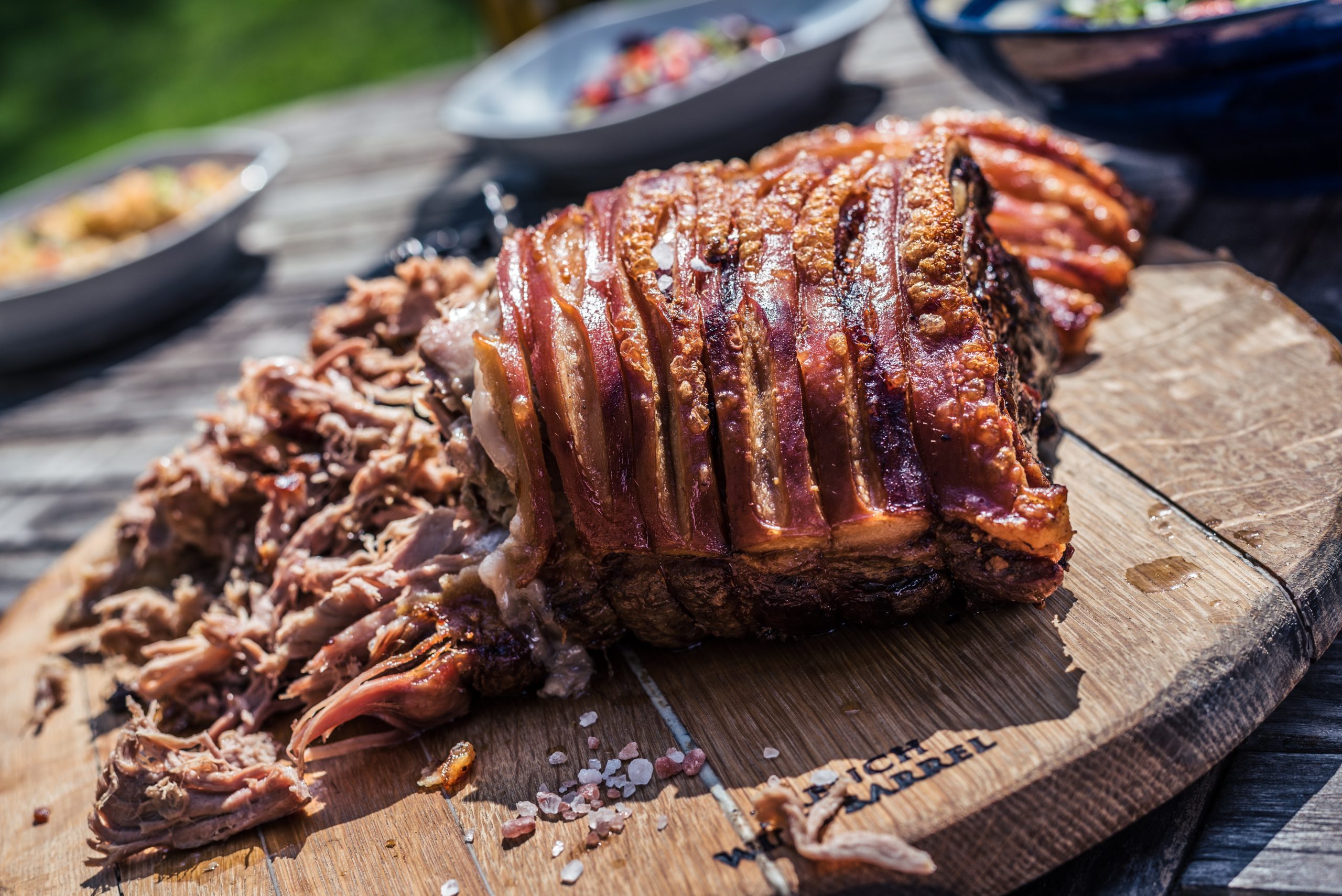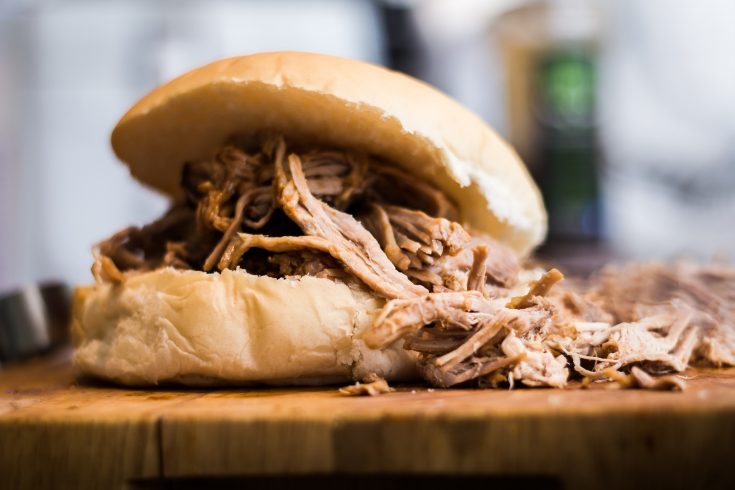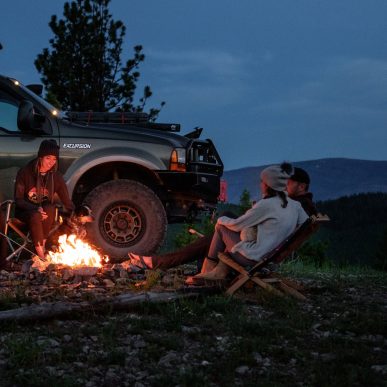Summer means Barbecue. The most uniquely-American of cuisines, barbecue is one of the foods that engenders unbreakable loyalty amongst its fans, and inspires passionate debate among the widely varied camps of barbecue fandom; Which barbecue style is best? Texas? Memphis? Kansas City? Is it smoked over Hickory or Oak? Mesquite? In a pit? Tomato-based or vinegar sauce? (Sauce may be the only thing that inspires more heated debate than barbecue itself…)
Attempting to convince one side of the other’s superiority is an exercise in futility. The only consensus among BBQ aficionados is this: there is nothing better than kicking back on a summer afternoon, with some smoked brisket piled high on a bun, slathered in barbecue sauce, and a cold beer by your side.
Unless you’re from the Carolinas, in which case you’re playing a whole ‘nother barbecue ballgame: pork.
What Is Carolina BBQ Anyway?
While beef brisket reigns supreme throughout the rest of the country, Carolina BBQ is smoked pork, and has been for hundreds of years.
Perhaps the oldest barbecue style in American, Carolina BBQ is thought to have originated in the Caribbean (where BBQ has its original roots) in the 16th and 17th centuries, before it spread to the Colonies by way of Florida and Alabama. Caribbean barbecue first came about to make the cheaper, less choice cuts of meat tender and more palatable, and when the Spanish brought pigs with them in the 16th and 17th centuries, pork quickly became the meat of choice, as it was traditionally far cheaper and more accessible than beef.
Carolina BBQ also tends to differ from other styles in how it’s served (usually chopped finely, instead of sliced in large slabs, like brisket or tri-tip) as well as what it’s served with. It’s often from the pork shoulder, but even more traditionally, is of a style unique to the Eastern Carolinas: Whole Hog.
Again, whole Hog Barbecue doesn’t get much attention compared to the more conventional brisket, but in the Carolina’s east of the Piedmont, that’s what barbecue is: a whole pig, cooked low-and-slow over scorching hardwood coals. (It’s also worth noting that the same style of whole hog BBQ often makes it way into the mountains of Eastern Tennessee).
And when we say low-and-slow, we mean it; a whole pig can take anywhere from 12 to 24 hours to smoke. In fact, you might say the secret ingredients for whole hog BBQ are lots of heat, smoke and midnight oil. Traditionally, pitmasters dig an open pit in the ground, fill it with wood, which was then burned down to coals over which entire pigs were hung on a spit. They would then be turned constantly and slowly with the smokemasters staying up the entire night to ensure the perfect smoke.
This lengthy cooking time is essential: an entire hog can weigh in the ballpark of 200 pounds, and the low-and-slow approach is the only way to ensure a tender, easy-to-pull meat with perfectly rendered fats and cartilage. (Doesn’t sound so appetizing when you say it that way…)
These days, you’re likely to find whole hog barbecue done over a brick-lined or finished pit, as opposed to deep in the ground, but the tradition remains alive and well – as does the smoky flavor.
Barbecue Battles: Eastern-Style vs Lexington-Style
There are two main styles of North Carolina BBQ: Eastern-style and Lexington-style. Two unique elements that sets Eastern-style barbecue apart from most other barbecue:
First, it uses the whole hog. Second, the sauce: first invented in the 1600’s, Eastern-style sauce is a clear vinegar-based sauce with salt and pepper, and none of the tomato found in more-conventional barbecue sauce. At the time, vinegar was really the only thing used for a sauce throughout the colonies, as it was cheap and readily available. Up until the mid-19th century, in fact, vinegar was the main sauce throughout all of America.
Even after tomato-based sauces took off in the rest of the country, vinegar remained super popular in North Carolina. Instead of adding additional flavor to the meat or even masking it, vinegar allows the meat’s natural flavor to shine through, complemented by the smokiness of the wood and the spices rubbed onto the meat.
Then, there’s Lexington-style, which is named after the city of Lexington, North Carolina and is predominant in the Western and Piedmont part of the state; you could also say the Piedmont is the dividing line between two rival BBQ traditions.
While Eastern-Style uses the whole hog and a clear sauce, Lexington-style involves smoking only the pork shoulder, which is much faster and wastes less – and adds ketchup to the sauce – commonly called “dip.” Pork Shoulder absorbs more smoke than most other cuts of the hog, giving it a smokier, tangier flavor that promises to tantalize.
These rival styles each have their own preferred method of cutting meat, too; Eastern-style chops it, while Western-style slices the pork.
Both camps have their loyal followings, and these followings can have strong opinions about the topic; opinions you BBQ Purists will say you can only have one favorite, and it’s probably not worth debating; neither side is likely to change its mind. The only thing they can really agree on is that proper barbecue is pork smoked in a pit. Everything else is up for debate.
What About South Carolina BBQ?
For those of you south of the state line, don’t worry: we haven’t forgotten about the Palmetto State. South Carolina BBQ is much like North Carolina BBQ, having inherited the pulled pork and sauces – both Western and Eastern-style – from its Northern neighbor.
But there is also a specific South Carolina style: In the Midlands of the State, you can usually a mustard-based sauce, with brown sugar and vinegar, sometimes called Carolina Gold. This sauce owes its beginnings to the many German immigrants to the State in the 18th century and is what many refer to as “South Carolina BBQ.” You can now often find it spread throughout the state, as well.
Where To Get The Best Whole Hog And Carolina BBQ
To taste all the best of North Carolina BBQ, you’ll need to plan at least a roadtrip.
For traditional Eastern-style whole hog BBQ, head to Ayden, North Carolina, a small-town east of Raleigh and few hours from the coast. There, you’ll find the legendary Skylight Inn, which has been serving old-time smoked hog for since 1947, using a centuries-old recipe. It’s perhaps the most famous BBQ joint in the Carolinas, and nationally recognized as the one of the best.
Skylight Inn smokes the hog without any kind of seasoning or sauce, before chopping it up by hand (the traditional Eastern-style way) and adding some vinegar, salt and pepper and a dash of hot sauce, which are tossed to spread the flavor evenly throughout the meat. The result is a smoky, peppery serving of pork that stands out from the other BBQ’s you’ve probably had before. It’s a bit drier, but every bit as tender, and without the additional trappings of a thick barbecue sauce, you can really make out the hog’s true flavors.
A meal at Skylight lets you choose either a pork sandwich or a full-on meat platter, complete with coleslaw and cornbread, which are traditional Carolina BBQ fare.
When you’ve had your fill of whole hog, it’s time for some for traditional Lexington-style barbecue. You’ll need to head west to Lexington itself, where the style originated. The town is home of the annual Lexington Barbecue Festival, which takes place every September, and your first stop will be the aptly-named Lexington Barbecue, a mainstay of the local barbecue scene. Lexington Barbecue was opened in 1962 by Wayne Monk, and has been smoking pork shoulders Eastern-style (with vinegar and ketchup) over brick pits ever since.
Another fantastic joint to check out would be the Barbecue Center, which also serves some Lexington-style BBQ complete with classic “red slaw” (slaw made with cabbage, vinegar and ketchup, as opposed to mayo), fries and hushpuppies – another fried Southern classic.
Real People, Real Food
Of course, we can’t forget to mention the endless multitude of fantastic, authentic, BBQ joints you’ll find throughout the Carolinas, often on the side of the road just outside of town. In fact, you could roadtrip for this country weeks for months and never tire of barbecue; it’s the quintessential American food, and it’s woven indelibly into the tapestry of the American landscape. The history of barbecue is the history of America, in a way.
Maybe that’s what makes barbecue so alluring; it captures the spirit of American frontier life in a way few other things can. What’s more rugged and adventurous than roasting a piece of meat over an open flame, the way cowboys and f used to do it?
So maybe it’s time for a roadtrip to try out some Carolina BBQ, specifically some whole hog. And if you’re adventurous (and vary patient), maybe try making your own this summer.










